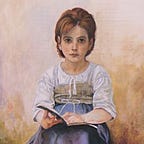Halves and “Almost Halves”(Game 2)
The first game of this series was about the distance of any number 1–10 to 5 and 5, allowing children to partition the number 5 (1 + 4 = 5, 2 + 3 = 5, etc.) , the number 10 ( 1 + 9 = 10, 2 + 8 = 10, etc.) and any number 6–10 as 5 + another number.
This game is about partitioning a number into its halves or “almost halves”. These halves and “almost halves” correspond to the situation where we need to distribute a certain number of players in two teams as fairly as possible.
For instance, if there are 6 players, we will have two teams of 3 players each, while, with 7 players, the fairest way is to have a team of 4 and a team of 3 players.
We can now appreciate the essential difference between even and odd numbers. An even number is made of a double: 8 is double 4 (8 = 4 + 4). An odd number can be partitioned into two consecutive numbers: 9 = 5 + 4 (where 5 and 4 are half of 10 and 8, respectively, i.e. the even numbers just before and after 9).
As for the first game, you need a “bank” made of a set of 1, 2, 5, 10, 20, and 50 p coins and a few pound coins, as well as a10-sided die. The game consists in taking turns and rolling the 10-sided die. Then, the player collects in pence half (if even) or the greatest “almost half“ (if odd) of the number displayed on the die.
Variations: Make it either “collect” or “loose” whether the number is odd or even (then, each player starts with 20 p). This game can also be combined with collect/loose double of the number shown on the die.
